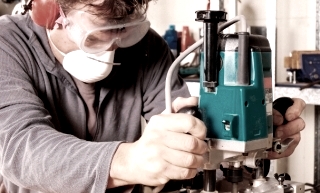The BWF’s Joinery State of Trade Survey Q2 2017 has indicated that although rising raw materials costs and labour availability are exerting pressure on joinery manufacturers, the industry is optimistic over sales figures and product investment opportunities.
BWF Policy and Communications Executive Matt Mahony commented on the state of the joinery industry:
 “With optimism over sales volumes and with order books holding up well, our survey paints a picture of an industry working hard to protect its margins against significant cost rises.
“With optimism over sales volumes and with order books holding up well, our survey paints a picture of an industry working hard to protect its margins against significant cost rises.
“It has been a theme of recent months that the joinery industry is having to think on its feet and diversify its offering. We know from the Q2 survey that investment in product improvement has been rising, and anecdotal evidence suggests that companies are taking on more of the burden of design and specification on account of knowledge gaps within the supply chain.
“Broader construction industry information supports our findings. The CPA have reported that UK construction product manufacturers are experiencing continuing growth in activity but high input costs and uncertainty have dampened expectations for the near future. Our story is more positive. After a mixed start to 2017 for joinery, 42% of respondents noted an increase in sales for the previous quarter with almost two-thirds expecting improved sales volumes for Q3.
“There are challenges out there. Labour availability remains a factor with skills shortages within the sector contributing to increased wage bills. In addition to this, almost all BWF members noted that raw material costs are now a significant inflationary factor for unit costs.
“Joiners, not least BWF members, are natural problem solvers both on site and off and we will be working hard with members to ensure that they are capable of addressing these challenges.”
Key points from the BWF Joinery State of Trade Survey Q2 2017 include:
– A balance of 42% of respondents reported an increase in sales volumes over the last quarter, with 52% reporting an increase over the last year. This corresponds with the 14% of respondents reporting a quarterly increase in the previous survey.
– Manufacturers felt that sales volumes would improve in the next quarter, with a balance of 61% predicting an increase for Q3 2017, and a balance of 60% predicting an increase over the next year.
– 42% of companies reported a current order book of future work extending beyond 3 months – up 13% from the previous quarter – with 41% saying that their order book extended from between 1 and 3 months.
 – Labour availability was listed as the most likely constraint on output over the next year by 27% of respondents. Demand and Capacity came next, with 25% and 20% of respondents feeling that they were most likely to constrain output (see graph).
– Labour availability was listed as the most likely constraint on output over the next year by 27% of respondents. Demand and Capacity came next, with 25% and 20% of respondents feeling that they were most likely to constrain output (see graph).
– 38% of respondents on balance reported increasing their labour force in the last year, with 50% of respondents anticipating an increased labour force over the next year.
– Raw material costs were noted as the main inflationary factor for unit costs for 97% of respondents, with wages/salaries increases pushing up unit costs for 76% of respondents on balance.
– Exchange rates were a factor in inflating unit costs for 63% of respondents.
– Over the previous year a balance of 64% of respondents had invested in improving their products with 60% investing in their plant/equipment.
 – Investment in in product improvement was set for the highest capital investment over the next year, with a balance of 70% planning to invest and with 60% set to invest plant/equipment.
– Investment in in product improvement was set for the highest capital investment over the next year, with a balance of 70% planning to invest and with 60% set to invest plant/equipment.
As a benefit of membership, British Woodworking Federation members can view the full BWF State of Trade Survey plus the latest economic reports produced by the Construction Products Association industry forecasting team.
ENDS